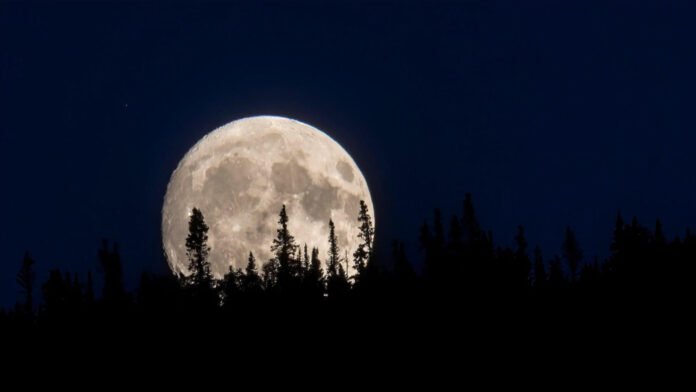Published on Jul. 9, 2025, 6:30 PM
When the Sun, Earth, and Moon line up in ‘syzygy’ Thursday night, the Full Buck Moon will shine in the sky.
Do you have reasonably clear skies during the latter half of this week? If so, take a few minutes to look towards the sky, and witness the beauty of the Full Buck Moon.
July 2025’s Full Moon occurs at exactly 20:39 UTC, or 4:39 p.m. EDT, on the 10th.

This view of the Buck Moon was captured by Matt Melnyk on July 13, 2022 from Calgary, Alberta, and uploaded to The Weather Network’s UGC gallery.
Don’t be too focused on seeing it at that precise moment, though. The side of the Moon that perpetually faces Earth will appear full — over 99 per cent illuminated by the Sun — from after midnight on the morning of July 10, all night long from moonrise to moonset on the night of the 10th to 11th, and even as the Moon rises again on the evening of the 11th.
This is the first of three Full Moons for Summer 2025. It is also the second of four ‘normal’ sized Full Moons that span the season and into early Fall, following a string of ‘Micromoons’ in the spring, and before the upcoming trio of ‘Supermoons’ that will close out the year.

The three Full Moons of Summer 2025. Although the September 7-8 Corn Moon does produce a Total Lunar Eclipse, the event will not be directly visible from anywhere in Canada. (NASA’s Scientific Visualization Studio/Scott Sutherland)
However, if you’d like to see the Moon look exceptionally big, be sure to find it in the eastern sky just after sunset, or in the western sky just before sunrise. In either case, a mysterious effect known as the Moon Illusion will make our celestial companion look huge!
READ MORE: Why does the Moon look so big? It’s the mysterious Moon Illusion!
‘Buck’ Moon? What’s that?
With the exception of the occasional Blue Moon, each Full Moon we see during the year has its own popular name. The publishers of the Old Farmer’s Almanac gathered these names together in the early 20th century, inspired by Colonial and European folklore, but mostly by the indigenous peoples of what is now the northeastern United States and the Great Lakes region.


























